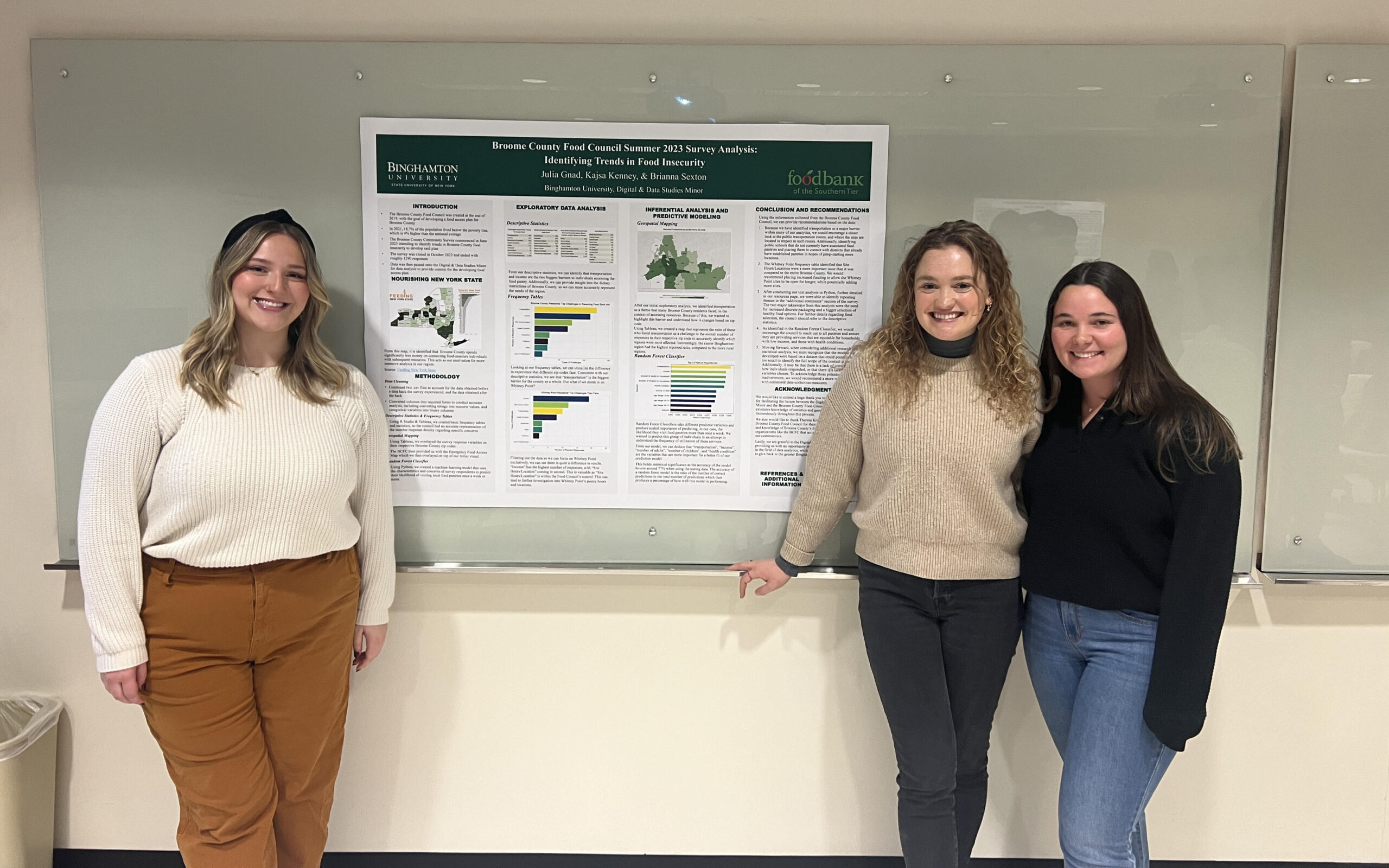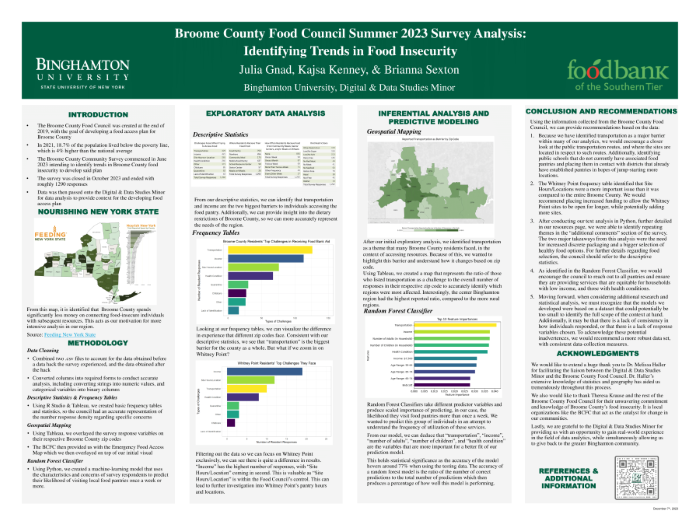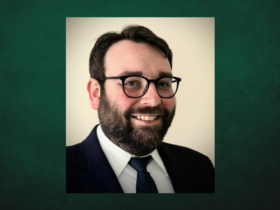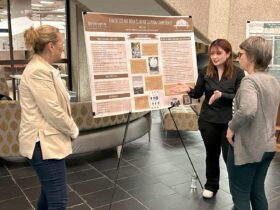Most student groups in Dr. Melissa Haller’s capstone course (DiDa 425) collected data from online sources analyzing and compiling the data into a final poster. However, one group in the course had the opportunity to work with data that became a little more personal.
At the end of the fall semester in 2023, the Digital Scholarship team was invited to Dr. Haller’s Digital & Data Studies (DiDa) capstone class during their final poster presentations. Kajsa Kenney, Julia Gnad, and Brianna Sexton’s poster on their work with the Binghamton Food Council stood out as an important example of student research paired with community-engaged work. The student group, along with community stakeholders and their instructor, worked together to investigate and present solutions for making food access programs more accessible to community members.

For this collaboration with the local community to work, Dr. Haller, the co-coordinator of the DiDa program and the students’ instructor for the capstone, initiated contact with the Binghamton Food Council. The Food Council had recently conducted a survey, initially online and then in-person, to gather information and feedback from community members about how they accessed various food services, such as pantries and food drop-off locations, across the Binghamton area. The goal of the survey was to help address the food desert areas in Binghamton and improve access to food programs in general.
Working with the food council presented unique opportunities and challenges for the group. On the one hand, the project gave the students the chance to relate to and learn about the greater Binghamton community. Unlike working with datasets sourced online, Kenney, Gnad and Sexton had the opportunity to work in a more hands-on way. Kenney explained that “it was really cool; a lot of people in the class were using more like Kaggle datasets, things like that, so to be able to actually work with real stakeholders and help them out was a really cool experience.” Gnad explained her experience was “very emotional at times. We aren’t removed from this data; we are kind of seeing the issue living in Binghamton and being a part of this community.” That emotional aspect and direct impact that their research had on the community and stakeholders they were working with were helpful driving forces for the group despite some of the challenges that arose.
Throughout the project, Kenney, Sexton and Gnad were consistently challenged to grow their own technical and problem-solving skills. The food council had been surveying community members to learn about how they accessed various programs around the Binghamton area to discover better ways of making food services accessible. The survey data needed to be cleaned, organized, and analyzed to help the food council volunteers create a plan for next steps. To get the data ready, the students first needed to clean and merge data from across the two types of surveys, digital and physical, the food council had been conducting and then begin to analyze the data for service gaps. Additionally, Kenney, Gnad and Sexton, with help from their instructor Dr. Haller, learned how to translate questions or problems posed by the Food Council into a method or tool that they could use with the collected data to provide the Food Council with the information they needed.

While the group continued to work on the project after the fall semester, they were able to deliver some conclusions to the Food Council based on their analysis of the data. What the students found in the data was that pick-up locations or pantries could be far away for some community members who needed them, and their hours were limited, making it particularly difficult for those relying on public transport to use them. The students also highlighted other findings from the surveys, such as the need for discreet packaging at pick-up locations that would not reveal that community members had received their items and food from the food council.
The learning experience and challenges, however, are what made the project especially important to the students. For Gnad, the capstone project was like a missing piece of her college experience puzzle. Previously, she was not able to fully connect her major and schoolwork to understanding what jobs or professional experiences she would like to pursue. However, the capstone project revealed some of what it would be like to work with community stakeholders on public health issues and made her more confident about her own professional goals. And for Kenney, the opportunity to work on a community project was an important part of her college experience. “Knowing that we were able to give back to the community that gave us a college education… was really important to me. And I learned about myself and how I learn.”
Kenney, Gnad and Sexton’s work and experience in DiDa 425 show the value of community-engaged learning both for the students and the community that they live and study in. As the DiDa program continues to grow, they also hope to expand their community outreach and connect more student researchers to community organizations in meaningful and productive ways.






